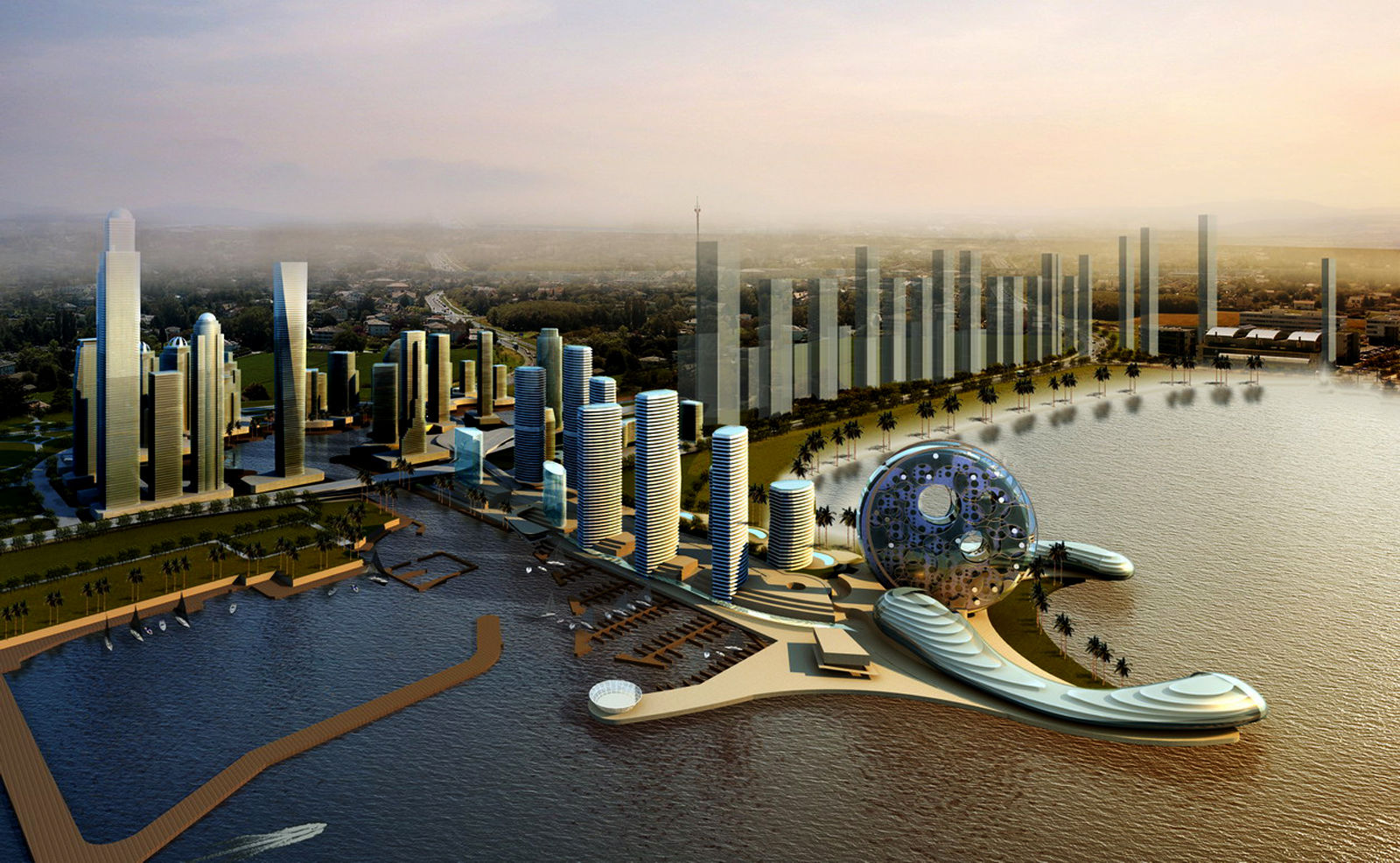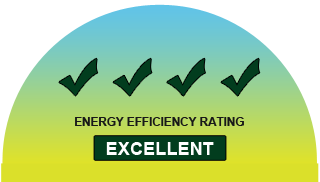
Futuristic Buildings
FB | Today's Technology is Solving Yesterday's Problems

Lighting is one of the major energy consumer that affects the environment in a number of ways, including energy usage, the materials used to produce lighting products, and light's impact on the nighttime sky. For example, energy-efficient lighting demands less electricity, which reduces polluting power plant emissions. Some materials used in lamps, such as mercury, are toxic to the environment and must be handled carefully. Light shining into the sky causes light pollution. Currently, lighting energy takes up 15-30% of the total amount of household energy used and according to one of the study states that US people
What is LED?
An LED (light-emitting diode) is a semiconductor light source that generates light at a precisewavelength when a current is applied. Each diode is about 1/4 inch in diameter and uses about ten milliamperes to operate at
LED Lighting
about one-tenth of a watt (Singh, 2010). Initially, LEDs were imited to single-bulb use in applications such as instrument panels, electronics, pen lights and, more recently, strings of indoor and outdoor Christmas lights. Now, manuafcturers are ‘clustering’ the small bulbs, today LED light bulb are made using as many 180 bulbs per cluster, and encased in diffuser lenses which spread the light in wider beams. (Eartheasy, n.d)
Uses
LEDs are currently used for a wide variety of different applications such as: residential lighting, aerospace industry, architectural, automotive, broadcasting, electronic instrumentation, entertainment and gaming, the military, traffic and transportation. Since LEDs are focused lights they prove best at specific lighting tasks such as desk lamps, reading lights, night lights, security lights, spot lights, accent lights and lighting for signage.
How are LED Lights different from conventional light sources?
Instead of containing filaments in glass or bulbs that contain gases like those of incandescent and fluorescent lights, LEDs consist of small capsules or lenses in which tiny chips are placed on heat-conducting material. (Reference: U.S. Environmental Protection Agency: Learn About LEDs) This brings about various benefits:
-
Energy efficiency/ low voltage

Energy Efficiency Rating in Singapore Source: http://www.energyportal.sg/images/energy_usage/energy_efficient.png

LED small bulbs Source: http://logtas.com/wp-content/uploads/2013/10/LED-Lighting.jpg
LEDs measure from 3 to 8 mm long and can be used singly or as part of an array. The small size and low profile of LEDs allow them to be used in spaces that are too small for other lightbulbs. In addition, because LEDs give off light in a specific direction, they are more efficient in application than incandescent and fluorescent bulbs, which waste energy by emitting light in all directions. U.S. Department of Energy:LED Frequently Asked Questions
LED light bulbs use only 2-17 watts of electricity (1/3rd to 1/30th of Incandescent or CFL). LEDs have a lifespan of up to 60,000 hours compared to 1,500 hours for incandescent bulbs. An LED light will last over 7 years (constant use) before needing
replacement. On average, LED bulbs last 10 times as long as compact fluorescent bulbs, and 133 times longer than typical incandescent bulbs. Long lifespan of LEDs will dramatically reduce maintenance costs and lower long-term operating costs compared to traditional incandescent and fluorescent tubes.
These bulbs do not cause heat build-up as they emit very little heat; LEDs produce 3.4 btu's/hour, compared to 85 for incandescent bulb, and so to put it in perspective incandescent bulbs release 90% of their energy as heat and CFLs release about 80% of their energy as heat. (Energy.Gov). Common incandescent bulbs get hot and contribute to heat build-up in a room. LEDs prevent this heat build-up, thereby helping to reduce air conditioning costs in the home. (Eartheasy, n.d.)
LED lifespan scenarios:
- 50,000 hours powered 4 hours/day = 34 year lifespan
- 50,000 hours powered 8 hours/day = 17 year lifespan
- 50,000 hours powered 24 hours/day = 6 year lifespan
-
Ecology-friendly
Most conventional fluorescent lighting bulbs contain a multitude of materials like e.g mercury that are dangerous for the environment. LEDs do not contain such toxic substance like mercury.
-
Durable quality
LEDs are solid state lighting devices that utilize semiconductor material instead of a filament or neon gas. An LED light is a tiny chip encapsulated in an epoxy resin enclosure, which makes LEDs far sturdier than traditional incandescent light bulbs or fluorescent tubes. Since LEDs don't use fragile components such as glass and filaments, LEDs are able to withstand shock, vibration and extreme temperature. (myLEDlight)
Hence, LED bulbs used in fixtures inside the home save electricity, remain cool and save money on replacement costs since LED bulbs last so long. Small LED flashlight bulbs will extend battery life 10 to 15 times longer than with incandescent bulbs. (Eartheasy)
Implication: Potential Savings

Energy Efficiency Initiatives Source: http://www.energyportal.sg/images/energy_usage/ThinkActSave.png
If you want to consider an LED bulb for your fixture, you'll get even better efficiency and longer life.
For a 60-watt replacement, one popular choice right now is the Philips 12-watt Ambient LED, which produces remarkably soft, yellow light. It's also fully dimmable, and is rated to last 25,000 hours. It costs $40, which we know is more than you're used to spending on a bulb. But let's calculate potential savings.
For a lamp that's on six hours a day, that would give us 12 watts x 6 hours x 365 = 26.3 kWh.
At 12 cents per kWh, that's $3.12 a year to operate. Subtract that from $16, and that's a savings of more than $12.80 a year. With a lifespan of 25,000 hours, it should theoretically last for about 12 years in this application.
Over 12 years, we would otherwise have to buy 24 incandescents, for a cost of $18, or about $1.50 each year.
With the annual savings of $12.80 in energy and $1.50 in bulbs, the LED will pay for itself in just under three years. (Howard, n.d)